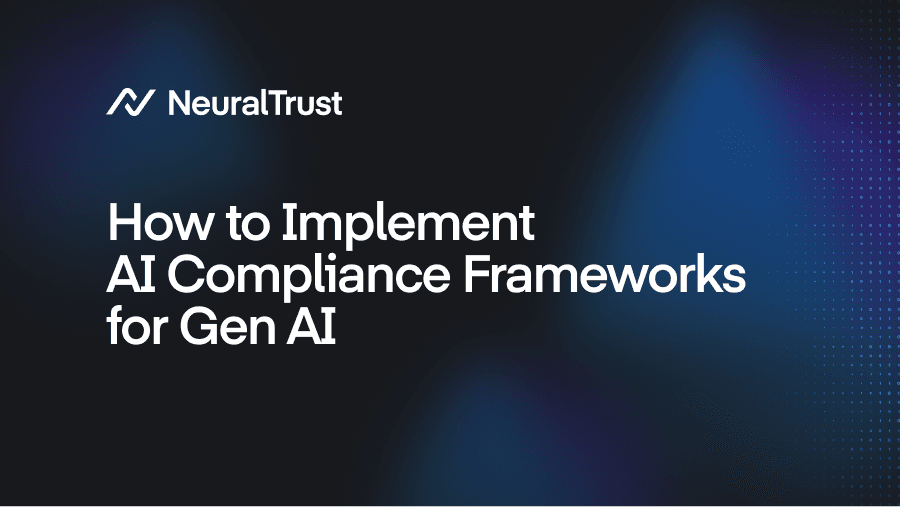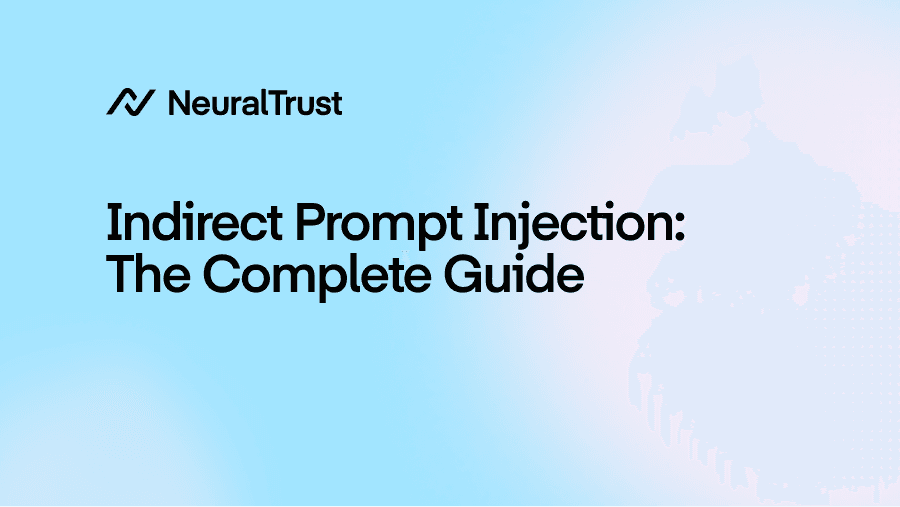How to Implement AI Compliance Frameworks for Generative AI Systems

As generative AI systems become integral across various industries, ensuring their compliance with regulatory standards and ethical guidelines is paramount. Implementing robust AI compliance frameworks not only mitigates risks but also fosters trust and reliability in AI applications.
This article delves into effective strategies for establishing AI compliance frameworks tailored for generative AI systems, encompassing governance tools, compliance strategies, and adherence to regulatory requirements.
Key Compliance Standards for Generative AI
As AI adoption accelerates, organizations must comply with multiple regulatory frameworks to ensure ethical, legal, and secure AI deployment. Below are some of the most critical compliance standards businesses need to consider. (AI Compliance in 2025)
1. The EU AI Act
The European Union AI Act is the first comprehensive AI regulatory framework that categorizes AI systems based on their level of risk—minimal, limited, high, or unacceptable. High-risk AI applications, such as those used in healthcare, finance, and law enforcement, must adhere to strict requirements, including transparency, human oversight, and risk management practices.
2. GDPR (General Data Protection Regulation)
The GDPR applies to AI systems processing personal data within the EU. It emphasizes data protection, privacy rights, and accountability. AI models trained on personal data must ensure compliance with GDPR principles, including lawful processing, data minimization, and user consent management. Violations can lead to heavy fines and reputational damage.
3. CCPA (California Consumer Privacy Act)
The CCPA (and its update, the CPRA) is a major U.S. privacy law that governs data collection and processing practices. AI applications used by companies handling California residents' data must provide opt-out options, data transparency, and robust consumer protection measures.
4. NIST AI Risk Management Framework (AI RMF)
Developed by the National Institute of Standards and Technology (NIST), this voluntary framework helps organizations manage AI risks by focusing on governance, fairness, transparency, and security. Companies leveraging generative AI can use the AI RMF to align their AI development with industry best practices and emerging regulatory expectations.
5. ISO/IEC 42001 (AI Management System Standard)
This new international standard by the International Organization for Standardization (ISO) provides a structured AI governance framework. It guides organizations in managing AI risks, ensuring ethical AI deployment, and aligning AI systems with regulatory requirements.
6. HIPAA (Health Insurance Portability and Accountability Act)
For AI applications in healthcare, HIPAA compliance is mandatory to protect patient data privacy and security. AI-driven diagnostic tools, virtual assistants, and medical AI systems must follow strict access controls, encryption policies, and auditing mechanisms to prevent unauthorized data access.
7. SOC 2 (Service Organization Control 2)
SOC 2 is a framework for data security and privacy used by cloud-based AI service providers. It ensures AI systems handling sensitive customer data meet security, availability, and confidentiality standards. SOC 2 compliance is often required for AI vendors serving enterprise clients.
8. FERPA (Family Educational Rights and Privacy Act)
For AI applications in education technology (EdTech), FERPA compliance is crucial to protect student data privacy. AI-driven learning platforms must restrict access to student records, enforce parental consent measures, and maintain strong data security.
Navigating AI Compliance Across Multiple Standards
Companies operating in multiple jurisdictions must align their AI compliance strategies with overlapping global regulations. Implementing AI governance tools, robust documentation, and automated compliance monitoring helps businesses stay ahead of evolving regulatory requirements.
Understanding AI Compliance Frameworks
An AI compliance framework is a structured set of policies and procedures designed to ensure that AI systems operate within legal, ethical, and safety boundaries. For generative AI systems, these frameworks address unique challenges such as data privacy, model transparency, and output accountability.
Key Components of AI Compliance Frameworks
- AI Governance Tools: Essential for monitoring and controlling AI systems, tracking model performance, managing data usage, and documenting decision-making processes.
- AI Compliance Strategies: Risk assessments, ethical guidelines, and continuous monitoring mechanisms help organizations maintain compliance and prevent bias.
- Regulatory Compliance for Generative AI: Adhering to regulations like the EU AI Act requires risk management systems, transparency measures, and clear AI process documentation.
Steps to Implement AI Compliance Frameworks
- Conduct a Comprehensive Risk Assessment: Evaluate potential risks, including data privacy, model biases, and operational vulnerabilities.
- Develop and Enforce Ethical Guidelines: Define acceptable AI use cases, content boundaries, and privacy policies.
- Implement Continuous Monitoring and Auditing: Use automated tools to track AI compliance in real time.
- Provide Training and Awareness Programs: Educate teams on AI compliance, security, and ethical responsibilities.
Challenges in Implementing AI Compliance Frameworks
Deploying AI compliance frameworks requires organizations to navigate evolving regulations, manage AI’s technical complexities, and foster cross-functional collaboration.
1. Keeping Pace with Rapidly Evolving Regulations
AI laws like the EU AI Act, GDPR, and HIPAA continue to evolve. Businesses must monitor legal updates and ensure their AI compliance frameworks remain flexible.
2. Managing the Complexity of AI Technologies
AI models process large datasets and evolve over time, making compliance a moving target. Explainability techniques, such as SHAP and LIME, help meet transparency requirements.
3. Ensuring Cross-Functional Collaboration
AI compliance requires input from legal, technical, and security teams. Clear governance structures and compliance training programs ensure seamless collaboration.
4. Balancing Compliance with Innovation and Performance
Strict regulations can slow AI deployment. Embedding compliance by design into AI development ensures security and efficiency coexist.
5. Implementing Scalable and Adaptable Compliance Tools
Automated AI governance platforms provide real-time monitoring, reporting, and risk assessments to keep AI systems compliant as regulations evolve.
6. Addressing Ethical and Social Implications
Organizations must go beyond compliance to ensure fairness, bias mitigation, and responsible AI deployment.
Achieve Full AI Compliance with NeuralTrust
Navigating AI compliance doesn't have to be a challenge. NeuralTrust’s AI Governance Platform provides end-to-end compliance solutions, helping businesses stay ahead of evolving regulations while ensuring security, transparency, and ethical AI practices.
- Automated Compliance Monitoring – Real-time tracking of AI models to detect risks before they become violations.
- Regulatory Alignment – Built-in frameworks for GDPR, HIPAA, the EU AI Act, and other global standards.
- Explainability & Bias Audits – Ensure fairness and transparency with cutting-edge model evaluation tools.
- Seamless Integration – Scalable security and compliance across multi-model AI ecosystems.
Stay compliant. Stay secure. Stay ahead.
Request a demo today and discover how NeuralTrust can future-proof your AI compliance strategy.



